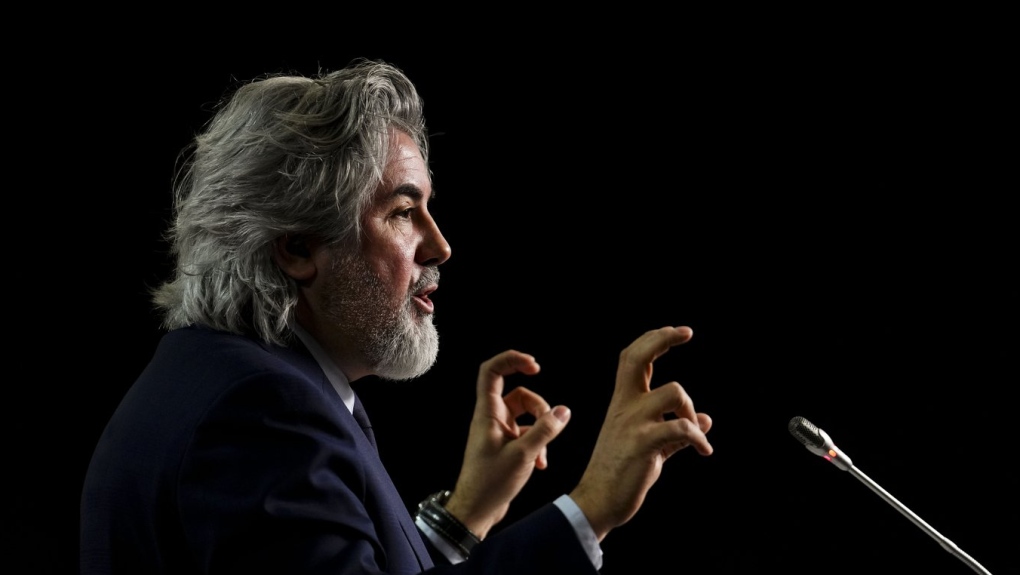
Want to Be Good at Philosophy? Study Maths and Science
Peter Boghossian and James Lindsay argue that philosophers must be scientifically informed.
If you want to be a good philosopher, don’t rely on intuition or comfort. Study maths and science. They’ll allow you access the best methods we have for knowing the world while teaching you to think clearly and analytically. Mathematics is the philosophical language nature prefers, and science is the only truly effective means we have for connecting our philosophy to reality. Thus maths and science are crucial for good philosophy – for getting things right.
Truth is not always intuitive or comfortable. As a quirk of our base-ten number system, for example, the number 0.999..., the one that is an infinite concatenation of nines, happens to equal 1. That is, 0.999... is 1, and the two expressions, 0.999... and 1, are simply two ways to express the same thing. The proofs of this fact are numerous, easy, and accessible to people without a background in mathematics (the easiest being to add one third, 0.333..., to two thirds, 0.666..., and see what you get). This result isn't intuitive, and – as anyone who has taught it can attest – not everyone is comfortable with it at first blush.
The sciences, which were largely born out of philosophy, are also replete with nonintuitive, and even uncomfortable truths. The most extreme examples of this are found in quantum mechanics, with interpretations of double slit experiments, quantum entanglement, and the Heisenberg Uncertainty Principle confounding essentially everyone. But even sciences investigating scales more familiar to us, like biological evolution, are nonintuitive and uncomfortable to the point of being rejected by surprising numbers of people despite overwhelming scientific consensus spanning nearly a century and a half.
Thinking philosophically requires the capacity to logically and rigorously engage ideas and then either accept the results or reject our assumptions – no matter how nonintuitive or how uncomfortable those assumptions may be. Mathematics is an ideal tool for teaching this as it is deeply abstract and simplifies reality nearly to the point of ignoring it. This does not mean that mathematics qua mathematics is always important for good philosophy, though it certainly can be. It does mean that learning to organise, think, and denote like a mathematician reaps enormous benefits for clear philosophical thought. Philosophers who can think like mathematicians are better at clear thinking, and thus philosophy.
For instance, consider the application of basic set theory to linguistics. Set-theoretic thinking – particularly, the applications of subset relations, intersections and unions, set inclusion, and even the relevant mathematical notation to modifiers such as adjectives, adverbs, and participial phrases – has proven fruitful in helping linguists clarify the relationships between words and the classes of ideas they represent. This application has allowed a more precise, deeper understanding of the ways that different uses of words create meaning in sentences and thus a capacity for clearer and richer expressions of ideas, including philosophical propositions. It has done so despite the fact that linguistics is not nearly as mathematically dependent as fields like physics.
Even philosophical efforts on desperately difficult topics like ethics – the apparently subjective nature of which serves quite reasonably something of a cordon sanitaire against the intrusion of too much objective empiricism into the provinces of philosophy – benefit from the habits of mathematical thought. For example, take Sam Harris's controversial 2010 contribution to the field in his bestselling book, The Moral Landscape. He argued for determining human values scientifically. The metaphorical moral landscape itself is most easily comprehended by picturing multidimensional topographies in which some measure of flourishing and suffering ranges in the vertical and peaks and troughs can be visualised as local maxima and minima. Further, Harris's entire argument rests in part upon his ability to articulate an objective nadir, an absolute minimum, in that space – the maximum possible suffering of every sentient creature. The entire moral landscape can be thus thought of as a partially ordered set of moral positions together with their resultant consequences as measured on hypothetical metric related to well-being and suffering.
Of course, mathematics is most clearly applicable to philosophy where it intersects with the mathematically hard sciences, like physics. Much in physics, for example, depends upon clearly understanding the scope, power, and impact of Noether's (first) theorem, named for Emmy Noether. Her theorem, proved a century ago and published in 1918, was truly revolutionary for physics because it completely changed how we understand conservation laws, revealing that conservation laws follow automatically from certain assumptions of invariance of physical laws (for example, if the laws of physics do not vary with locations in space, conservation of momentum automatically follows). Whether Noether's theorem is best classified as a result in abstract mathematics or theoretical physics isn't important, but that philosophers need to understand it is, at least if they want to work competently on ideas related to that which it pertains. Fully understanding and appreciating Noether's theorem, however, requires a solid grasp of abstract algebra, at the least at an advanced undergraduate level. Cosmological metaphysicians don't have much choice, then, but to learn enough mathematics to understand such ideas.
However, philosophy in general, and metaphysics in particular, isn't as neat as mathematics because it must engage with the messiness of the world to help us ascertain its truths. It therefore does not have the luxury of being purely abstract. Metaphysics attempts to extract truths about the world and articulate those truths in propositional format. It does this by examining the logical consequences of assumptions about reality which are based as closely as possible on reality, almost exactly like mathematics (counting and geometrical figures are empirical starting places for much of our mathematical reasoning) – and so metaphysics must begin with the recognition that the sciences are the only legitimate way to hook our ideas to reality. Even a powerful result like Noether's theorem is of no real application if we don't have good, data-supported reasons to think that conservation laws apply to the universe. Metaphysical pursuits that become too tangential to the world by being oblivious to science are little more than academic hobbyhorses.
One might contest that some branches of philosophy, like ethics, don't need to articulate truths about the world, or even that no branch of philosophy does because the purview of philosophy is inherently abstract. Whatever merit resides in this objection is lost to the fact that even if philosophy simply works out the logical consequences of various assumptions, the real-world worth of those assumptions comes down to being based upon observations of reality. Further, if philosophical inquiry is to have real-world significance – which has been the goal of every ethicist since Socrates – the results of one’s inquiry must be capable of being applied. Peter Singer's eloquent adjurations against eating animals, for example, may be logical consequences of his assumptions, but both his assumptions and his conclusions are immediately tied to reality – don't eat animals, a real applicable behaviour, because of the real suffering of real animals.
Moreover, the sub-disciplines of ethics in particular require tremendous insight into the nature of complicated real-world systems and a sincere willingness to revise beliefs in light of new discoveries – both of which are fostered by understanding science, the scientific methods, and the manner of scientific thought. Ethics plays out on the constrained system of human and other sentient psychology, which is a set of in-principle determinable facts about the world. (John Rawls, one of the most influential philosophers of the last century, explicitly acknowledged this in The Theory of Justice, as did Robert Nozick, one of Rawls’ principal detractors.) These facts are unlikely to be neat and clean in the same way as calculating ballistics for a rocket going to Jupiter, but they still represent a hypothetically knowable set of facts about the world. Poignantly, much within that set of facts is not arbitrary. Everything in that set depends entirely upon the realities of minds that perceive pain and pleasure, joy and despair, pity and schadenfreude. (Further, varied as we are, we're not that varied, so normative statements are remarkably powerful, for all that they may miss in the particulars.) Ethicists, therefore, should be scientifically informed in multiple domains of thought, like psychology, neuroscience, sociology, and the particulars of any science applicable to their specific projects, such as medicine, biology, and genetics.
In having contributed to the development of the scientific method, philosophy can be said to be a cart that brought forth and hitched its own horse. It can hardly escape notice that both science and philosophy begrudge the hitching. Scientists, not unfairly, often criticise philosophers for making speculations that are untethered to reality and for failing to make substantive progress. Philosophers, not unfairly, tend to disparage scientists for a lack of philosophical savvy, whether that savvy is relevant to working in the sciences or not. Science, however, unambiguously gets exactly what philosophy is after: correct answers relevant to the world. At times, those correct answers are the desired outputs of the philosophical process, and at other times, they are necessary inputs since one key role for philosophers is to help science ask the right questions and make contextual sense out of the answers it obtains.
As a necessary result of this arrangement, no matter how much grumbling it stirs in the philosophically inclined, the fact is that good philosophy should be scientifically informed – the cart must be hitched to the horse to be of much use. Fortunately, the idea that philosophy should be more mathematical and scientific has a strong precedent in the history of the discipline. (Spinoza, Descartes and others, for example, are known for using the "Geometric Method" in philosophy.) And eminent philosophers recognise both the historical significance of maths and science on the discipline of philosophy and the consequences of its absence. Take, for instance, Daniel Dennett, who likened many philosophical projects to exploring the logical universes of a fictional and irrelevant variant on chess, and the harsher Peter Unger, whose Empty Ideas is devastating to enormous swaths of philosophical pursuit, especially those that are scientifically uninformed. If philosophy hopes to achieve its truth seeking epistemological and metaphysical ambitions, and thus have “abiding significance,” it must be rooted in science.
Still, just as good philosophers gain competence by being scientifically informed, good theoretical scientists gain competence by knowing more and deeper mathematics. This does not imply that all good science is heavily mathematical, as biology is a conspicuous example of good science that isn't primarily mathematical. In On the Origin of Species, for example, there are no equations, but it abounds with observations and inferences. Even evolutionary biology, however, is deepened by the ideas in graph theory (the "tree of life," for example), set-subset relationships (taxonomy), probability and combinatorics (gene inheritance), dynamic modelling (differential growth rates of populations to describe effects of environmental pressures, say as modelled by the Lotka-Volterra equations and others), stochastic processes (random variation of traits), and the combinatorial approach to thinking about DNA as "mathematical words" in a four-letter alphabet. No discipline is better than mathematics for tuning an intellect to think in such a manner.
Some may object that the onus to develop mathematical competence and habits of thought lays upon theoretical scientists more than on philosophers, but this sells short the capabilities of good philosophers and the demands of good philosophy. The lines that divide theoretical science and good philosophy of the sciences are both blurred and thin, and hence many branches of philosophy necessitate that philosophers are in fact theoreticians. In that case, just as theoretical scientists are ultimately beholden to the data, no matter the elegance of their models, so too are good philosophers. Therefore, it’s necessary that philosophers are scientifically informed and it would be worthwhile for philosophers to be mathematically adept.
When the conclusions of sound argumentation proceeding from evidence conflict with common sense, it should be the latter that we dismiss and not the former. Good philosophers don’t rely on intuition or comfort. They use maths and science to clarify and inform their philosophy. Maths helps hone skills of clear, rigorous thinking, and science is unparalleled at determining facts and explanatory theories describing reality. Maths and science are therefore crucial for philosophy to make contributions of enduring worth, and so those who wish to be good at philosophy should study both.
Peter Boghossian is Assistant Professor of Philosophy at Portland State University and author of A Manual For Creating Atheists. He was thrown out of a philosophy PhD program at the University of New Mexico. You can find him on Twitter at @PeterBoghossian
James A. Lindsay has a PhD in mathematics and is the author of God Doesn't; We Do; Dot, Dot, Dot: Infinity Plus God Equals Folly; and Everybody Is Wrong About God. Follow him on Twitter: @GodDoesnt







